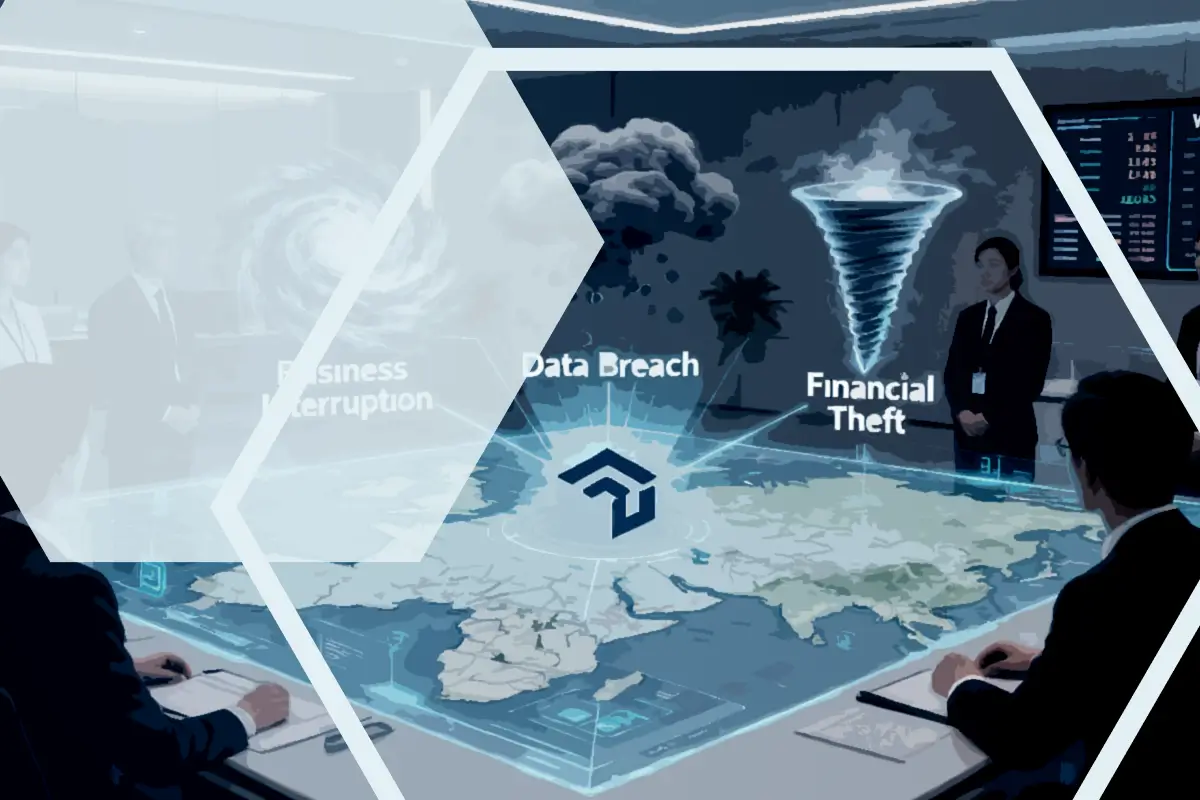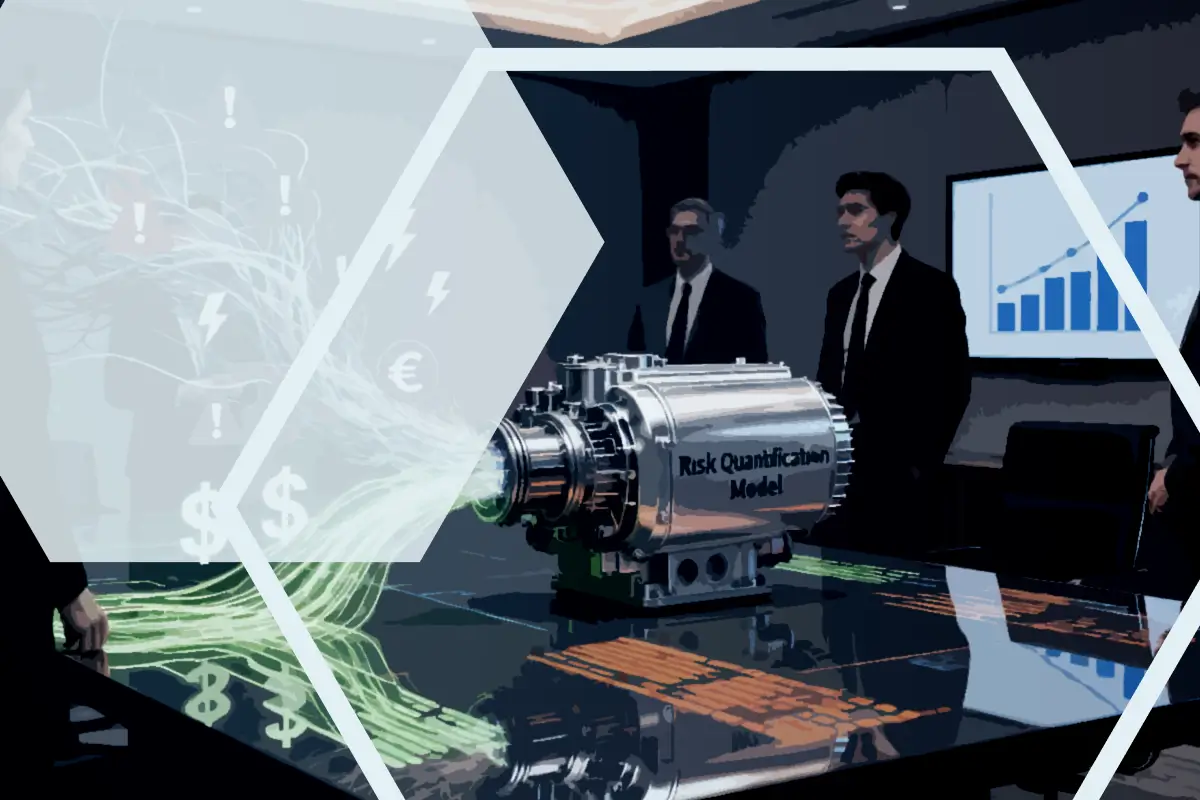The rise in cyber threats and stricter legal requirements for managing cyber risk have increased the personal accountability of board members. As a result, cyber risk has become a central topic in the boardroom agenda, prompting organizations to reassess their strategies for addressing information security challenges. This highlights the importance of quantifying cyber risks to create risk mitigation strategies. By doing so, organizations can develop effective cyber initiatives based on these strategies to mitigate the potential financial, legal, and reputational impacts of cyber attacks.
Despite the increased awareness of cyber risk at leadership levels and the advantages of cyber risk quantification (CRQ) in informing fiscal decisions, many organizations have been slow to adopt its principles. According to Deloitte’s 2023 Global Future of Cyber Survey, only 50% of C-level executives use quantitative risk evaluation tools. The other half still rely primarily on qualitative methods to understand their cyber risk, often involving subjective assessments and simplistic risk ratings such as red, yellow, and green.
This article introduces the transformative concept of cyber risk quantification. It outlines two primary risk quantification methods, top-down and bottom-up, and compares them to provide practical advice. By the end of this article, you will clearly understand the different cyber risk quantification methods and how to choose the one that best fits your needs.

Key Takeaways
- Cyber Risk Quantification (CRQ) translates the qualitative understanding of cyber risks into financial metrics. Quantifying cyber risk ensures a common understanding of the cyber risks and enables business leaders to make informed decisions.
- Bottom-up CRQ is best suited for detailed operational risk management but complicates scalability and strategic application on company level.
- Top-down CRQ provides a strategic overview of cyber risk, enabling rapid, high-level risk assessments that support strategic decision-making and long-term planning.
How Cyber Risk Quantification is Driving Boardroom Discussions
Cyber Risk Quantification (CRQ) is a new way for organizations to assess and manage cyber risk. Unlike traditional methods producing qualitative measures driven by expert opinions, CRQ translates technical cyber risk data into clear, data-driven insights about the financial and business impacts of cyber risks. This approach promotes a shared understanding of cyber risk. It helps senior leadership and board members address essential questions, such as:
- “How could our cyber exposures affect our balance sheet?”
- “What key business processes, product lines, or entities pose our highest cyber risks?”
- “What is the actual expected financial loss, considering our cyber risk exposure?”
- “How can we best define our risk appetite for cyber risks we are willing to accept?”
- “How do we show the value of security while managing costs?”
- “What security initiatives should we prioritize to maximize risk buy down?”
- “Do we have sufficient cyber insurance coverage?”
By providing clarity on these essential strategic questions, cyber risk quantification has become a valuable tool for effectively managing cyber risk with the following advantages:
- Business-friendly language: CRQ translates technical cyber risk into easily understandable metrics that are also understandable for non-technical stakeholders, senior leadership, and board members.
- Straightforward risk prioritization: Evaluating the economic impact of cyber risks allows for directly comparing different company risks, facilitating definition of risk appetite, risk prioritization and resource allocation to the most impactful risk mitigation initiatives.
- Return on investment (ROI) calculation: CRQ enables organizations to calculate the return on investment of security investments, prioritizing the most effective information security activities and taking dedicated action for ineffective security measures.
- Boardroom impact: CRQ ensures a common understanding of cyber risk among all stakeholders, helping senior leadership and the board of directors understand the importance of cybersecurity initiatives. It also aids cyber leaders, such as CISOs, gain support for critical investments and security initiatives.
Cyber Risk Quantification Methods and How to Choose One
When choosing the most appropriate method for quantifying cyber risk (CRQ) for your company, it’s crucial to understand that not all CRQ methods are the same. Each method has unique advantages and implications for the scope and quality of risk quantification. This section will outline the two most prominent CRQ methods, bottom-up versus top-down approach, and provide a detailed comparison to help you decide which CRQ method is most suitable for your company and why.

Bottom-up Cyber Risk Quantification: A Granular Look at Your Assets
Bottom-up quantification methodologies are a technical analysis of individual risks and threats associated with information assets within each business unit or at a process level. This approach is suited for managing cyber risk at the operational level.
Advantages of Bottom-up CRQ:
- Detailed Analysis: Bottom-up CRQ provides an in-depth understanding of specific systems and business processes, and their vulnerabilities.
- Customizable Models: Bottom-up CRQ allows for tailored risk assessment models that fit the unique characteristics of each organization.
- Return on investment (ROI): Bottom-up CRQ helps to better understand investments in security on the level of single controls.
Prominent bottom-up CRQ approaches include FAIR (Factor Analysis of Information Risk) or NIST SP 800-30.
Although bottom-up methods can be helpful for operational cyber risk management, they are limited in their usefulness for making strategic decisions at the company level due to their constraints in aggregating enterprise-wide risk data.
Challenges of Bottom-up CRQ:
- Operational Focus: Bottom-up CRQ focuses on a technical analysis of individual risks and threats at the asset level, limiting its usefulness for strategic decision-making.
- Complex and Dependent on Expert Knowledge: Implementing bottom-up CRQ requires a deep understanding of risk factors, identification of relevant data sources, and application of probability distributions.
- Scalability Issues: Bottom-up CRQ assesses risk for each asset or asset class, making aggregating these risks at the enterprise level cumbersome, often requiring weeks or months.
- Potential Information Bias: Bottom-up CRQ heavily depends on existing expert knowledge and subjective data input, which can distort the risk assessment if the data and assumptions are inaccurate or incomplete.
- High Maintenance Effort: Organizations must continuously maintain bottom-up risk assessment models to ensure their relevance and accuracy, as these models are tailored to their specific characteristics.
- Limited Threat Awareness: The bottom-up CRQ method potentially overlooks emerging or unforeseen risks because it relies on existing knowledge, thus primarily addressing known threats and vulnerabilities.
In summary, the bottom-up approach provides detailed insights into specific systems and processes to support the CISO in managing the complex cyber security system on the day-to-day operational level. However, this method may not be the best choice to inform the board members in their language of financial metrics due to its complexity, scalability challenges, and potential information bias. Understanding these factors will help determine if this method aligns with your organization’s needs and capabilities.
Top-Down Cyber Risk Quantification: Focus on the Big Picture
The top-down approach calculates a company’s large risk potential at the company level. This method offers considerable advantages for organizations seeking a holistic understanding of their enterprise-wide cyber risk profile. The results of top-down quantification enable the prioritization of risks, facilitate the creation of consolidated management reports, and enhance the capability for strategic decision-making among leadership and board.
Advantages of Top-down CRQ:
- Strategic Focus: Top-down CRQ provides a high-level view of cyber risk at the company level, supporting strategic decision-making at the highest levels of the organization. The output facilitates peer benchmarking and long-term comparisons, fostering an ongoing risk dialogue among top management.
- Rapid Risk Assessments: Top-down CRQ utilizes readily available public input data, such as from annual reports, requiring only a fraction of the input data needed for bottom-up approaches.
- Seamless Scalability: Standardizing risk assessments across business units and a high-level focus enable seamless enterprise-wide risk aggregation for comprehensive company-wide cyber risk management.
Squalify uses a top-down approach to measure cyber risk. Its semi-standardized model and ability to use aggregated input data give business leaders strategic insights into their cyber risk. Squalify’s approach to quantifying cyber risk brings additional benefits such as:
- Faster Time to Insights: With Squalify, you can conduct a worst-case loss assessment within 48 hours and complete a full cyber risk quantification in just a few days.
- Purely Data-Backed Approach: The top-down CRQ exclusively uses historical cyber loss data for defining the parameters of the quantification model, eliminating subjective data input.
- Zero Maintenance: Utilizes tested risk models and historical data to deliver consistent and accurate risk assessments.
- Inclusion of Unknown Risks: Top-down CRQ also considers potential threats unknown to the organization, providing insights into possible blind spots.
Challenges of Top-down CRQ:
- Less Granular Detail: Top-down CRQ may not provide the detailed insights into specific systems and processes that bottom-up approaches offer and is, therefore, less suited for decision-making at the operational level.
- Dependency on Data Quality: As top-down CRQ exclusively leverages historical loss data on cyber incidents, the quality of the results relies on the accuracy and completeness of aggregated data to produce reliable risk assessments.
When it comes to strategic decision-making at the company or business entity level, the top-down approach effectively overcomes the limitations of bottom-up approach when quantifying cyber risk. Although it may not provide a detailed analysis of bottom-up methods, top-down CRQ offers a strategic perspective on cyber risk in a record timeframe.

Final Words
Cyber risk management has become a significant concern for organizations worldwide in today’s rapidly evolving cyber threat landscape. The increase in cyber threats and stricter legal requirements have made cyber risk a top priority for companies, requiring a more advanced approach to comprehending and reducing these risks.
Cyber Risk Quantification (CRQ) is a novel concept that shifts the assessment of cyber risks from subjective judgments to data-driven insights. By translating cyber risks into financial terms, CRQ provides a clear, understandable picture of the potential impacts, enabling more informed decision-making at both operational and strategic levels.
Bottom-up CRQ provides detailed insights into specific systems and processes, making it ideal for managing cyber risk at the operational level. It offers:
- In-depth understanding of particular system vulnerabilities.
- Customizable models tailored to an organization’s unique characteristics.
However, bottom-up CRQ faces challenges such as complexity, scalability issues, and potential information bias, which limit its utility for strategic decision-making.
On the other hand, top-down CRQ provides a high-level view of cyber risk at the company level, supporting business leaders in making informed strategic decisions. It offers:
- A strategic focus on company-wide risks.
- Rapid risk assessments using readily available data.
- Seamless scalability and data-backed insights.
While top-down CRQ lacks the granular detail of bottom-up methods, it provides a comprehensive, strategic perspective on cyber risk. Top-down CRQ effectively addresses the limitations of bottom-up approaches and provides the foundation for senior leadership and board members to make informed security decisions.









